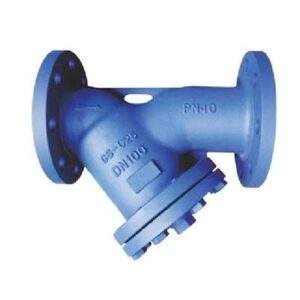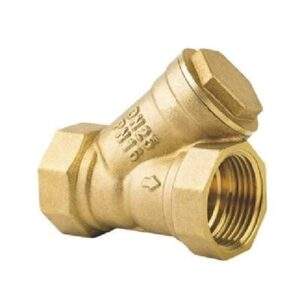Welcome to My Blog!
Before we dive into the content, I’d love for you to join me on my social media platforms where I share more insights, engage with the community, and post updates. Here’s how you can connect with me:
Facebook:https://www.facebook.com/profile.php?id=61563865935136
Now, let’s get started on our journey together. I hope you find the content here insightful, engaging, and valuable.
Introduction

When it comes to maintaining a clean and efficient pipeline system, selecting the right Y type strainer specification is crucial. These strainers help filter out debris, protecting downstream equipment from damage and ensuring smooth operations. Whether you’re dealing with water, steam, gas, or oil, understanding the specifications of a Y type strainer can help you make an informed decision.
A well-chosen y type strainer specification prevents contamination and prolongs the lifespan of industrial equipment by reducing blockages and minimizing pressure drops. With the right y type strainer specification, you can significantly enhance the efficiency of your system while keeping maintenance costs under control. This guide will explore various aspects of y type strainer specification, including their features, materials, applications, sizing, pressure ratings, and maintenance requirements. By the end of this article, you’ll have a clear understanding of how to find the perfect fit for your needs.
What Is a Y Type Strainer?
A y type strainer is a mechanical device used in pipelines to filter out debris and unwanted particles. Its Y-shaped body design allows for easy installation and efficient filtration, making it a popular choice across multiple industries. This strainer plays a vital role in preventing foreign particles from entering and damaging sensitive machinery, such as pumps, valves, and heat exchangers.
Key Features of Y Type Strainers
- Y-shaped body for compact installation, reducing space requirements
- Mesh or perforated screens to trap debris and prevent system contamination
- Drainage plug for easy cleaning without needing to dismantle the system
- Available in various materials to suit different media and environmental conditions
- Can handle high-pressure applications to ensure reliable performance in demanding industries
A y type strainer specification is typically installed in pipelines where debris buildup could cause damage or reduce efficiency. With proper maintenance and the correct y type strainer specification, these strainers can improve overall system performance and longevity.
Importance of Choosing the Right Y Type Strainer Specification
Selecting the correct y type strainer specification ensures efficient operation, extended equipment lifespan, and minimal downtime. A poorly chosen y type strainer specification can lead to frequent clogging, pressure drops, and increased maintenance costs. Additionally, using an undersized or incorrectly rated strainer can result in unnecessary energy consumption and system inefficiencies.
Factors to Consider:
- Pipeline size and flow rate – Ensuring the strainer can handle the required volume without causing excessive pressure loss
- Material compatibility with the medium – The material should resist corrosion and wear from the fluid passing through it
- Operating pressure and temperature – The y type strainer specification must be capable of withstanding the system’s conditions without failure
- Screen mesh size and open area – The filtration level should match the application’s requirements to prevent clogging
- Ease of maintenance and cleaning – A good y type strainer specification allows for convenient cleaning and screen replacement
Investing in the right y type strainer specification enhances operational reliability while reducing maintenance costs and equipment downtime.
Y Type Strainer Materials: Which One is Right for You?
The choice of material directly impacts the durability and compatibility of the y type strainer specification with the working medium. Different materials offer varying levels of resistance to pressure, temperature, and chemical exposure, making material selection a critical factor.
Cast Iron Y Type Strainer
- Cost-effective option suitable for water and low-pressure applications
- Commonly used in HVAC, plumbing, and light-duty industrial systems
- Not ideal for corrosive environments due to susceptibility to rust and degradation over time
Carbon Steel Y Type Strainer
- Higher strength than cast iron, making it suitable for higher pressure applications
- Works well with steam, oil, and gas industries where moderate corrosion resistance is needed
- Prone to rust without proper protective coatings, requiring periodic maintenance
Stainless Steel Y Type Strainer
- Excellent corrosion resistance, making it suitable for food, pharmaceutical, and chemical industries
- High durability and ability to withstand aggressive media such as acids and saltwater
- More expensive than other materials, but offers long-term reliability and reduced maintenance costs
Bronze Y Type Strainer
- Commonly used in marine and seawater applications due to superior corrosion resistance
- Good strength and ductility, making it ideal for potable water systems
- Limited pressure-handling capability compared to steel alternatives, making it suitable for lower-pressure applications
Choosing the right material ensures your y type strainer specification performs optimally while resisting wear and tear in its working environment.
Y Type Strainer Sizing and Pressure Ratings
Proper sizing and pressure selection are critical in determining the performance of a y type strainer specification. If a strainer is too small for the application, it can cause excessive pressure drop and reduce flow efficiency. On the other hand, an oversized strainer may lead to unnecessary costs and space consumption. The table below provides a general guideline for y type strainer specification sizing and pressure ratings.
Y Type Strainer Specification Table
| Pipe Size (Inches) | Mesh Size | Max Pressure (PSI) | Temperature Range (°C) | Suitable Applications |
|---|---|---|---|---|
| 1/2″ – 2″ | 40-100 | 200-600 | -20 to 400 | Water, Oil, Steam |
| 2 1/2″ – 6″ | 20-80 | 150-500 | -10 to 350 | Industrial Fluids |
| 8″ – 12″ | 10-50 | 100-400 | -5 to 300 | Chemical Processing |
| 14″ – 24″ | 10-40 | 50-250 | 0 to 250 | Wastewater Treatment |
Matching the correct y type strainer specification to your system requirements ensures optimal performance and long service life.
How to Select the Right Mesh Size for a Y Type Strainer
The mesh size of a Y type strainer determines how fine the filtration will be. A finer mesh captures smaller particles but may require more frequent cleaning.
Coarse Filtration (10-40 mesh)
- Ideal for large debris such as rust flakes and sediment
- Used in general pipeline protection for water and steam applications
Medium Filtration (40-80 mesh)
- Suitable for fine sediment removal, such as sand and small particles
- Used in industrial applications where moderate filtration is required
Fine Filtration (80-200 mesh)
- Captures very fine particles, ensuring high-quality filtration
- Common in food, pharmaceutical, and chemical industries where purity is critical
Choosing the right mesh size prevents clogging while maintaining proper system efficiency.
Installation Best Practices for Y Type Strainers

Proper installation ensures longevity and efficiency. Follow these best practices:
- Install the strainer in a horizontal position for optimal debris collection and drainage
- Ensure the strainer is accessible for easy cleaning and maintenance without system shutdowns
- Use isolation valves for safe maintenance and minimal operational disruption
- Check for proper flow direction to prevent damage to the screen and ensure effective filtration
Conclusion
Choosing the right Y type strainer specification is essential for efficient filtration and equipment protection. By considering factors such as material, mesh size, pressure rating, and installation best practices, you can ensure smooth operations and reduced maintenance costs.
If you’re looking for a high-quality Y type strainer that fits your needs, check out our extensive range of options and get the best one for your system today!
FAQ
What is the primary function of a Y type strainer?
A Y type strainer removes debris and particles from fluid systems, protecting pumps, valves, and other critical components from damage.
How do I choose the right Y type strainer specification for my application?
Consider factors such as pipe size, pressure rating, material compatibility, and mesh size to select the ideal strainer.
How often should a Y type strainer be cleaned?
Cleaning frequency depends on the type of fluid and the level of contaminants. For high-debris applications, regular cleaning is recommended.
